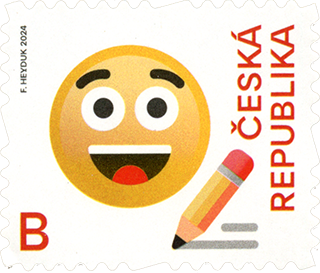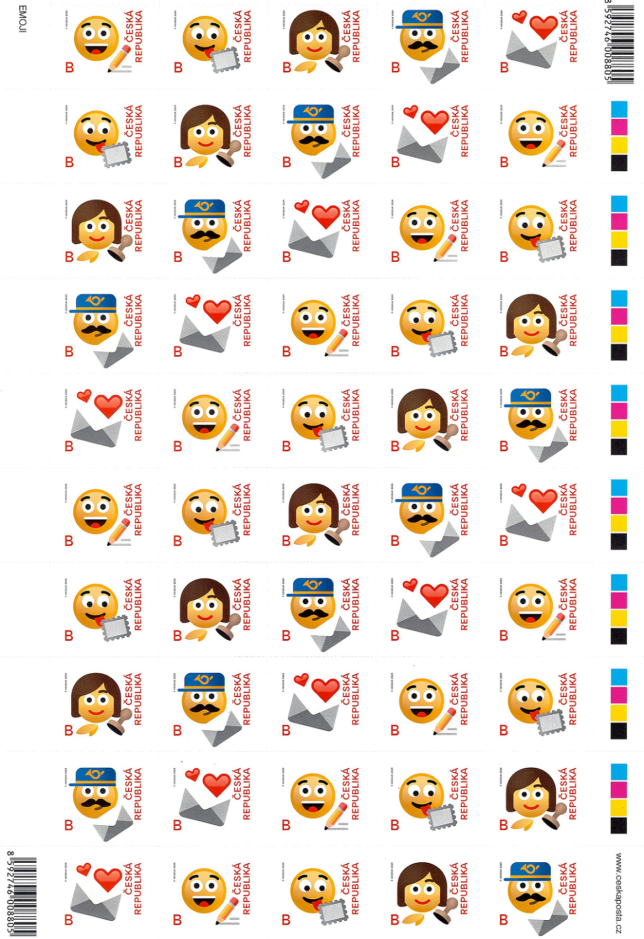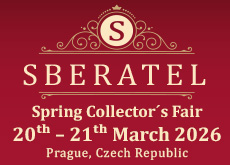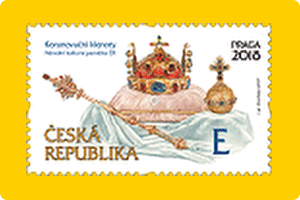
“Emoji” for the first time on Czech postage stamps
Sberatel.info
7. June, 2024

The popular “emoji” are an interesting revival of the Czech Post’s issue plan. A series of five stamps shows the journey of a letter from the writer through the post office to its delivery to the addressee.
The family of “emoji” stamps is the work of artist Filip Heyduk. The printing sheets feature 10 x 5 pieces of various self-adhesive stamps in a set of 30,000 printing sheets, i.e. 300,000 pieces of each. The offset-printed stamps bear the denomination “B”, i.e. 27 CZK (aprox. 1 EUR).
The first stamp depicts the writing of a letter, the next one the sticking of the stamp on the letter. The third and fourth stamps represent the process at the post office – the stamping and delivery of the letter. The last stamp expresses the joy of receiving the letter.

Before emoji, there were emoticons like :-) and :-(, created using keyboard characters to represent facial expressions. Scott Fahlman, a computer scientist at Carnegie Mellon University, suggested using these in 1982 to differentiate serious posts from jokes on online message boards.
Modern emoji were created by Shigetaka Kurita in 1999 for NTT DoCoMo, a Japanese mobile phone company. Kurita’s set of 176 emoji included symbols for weather, emotions, and various objects, and were intended to enhance digital communication.

Several postal stamp administrations have issued stamps featuring emoji motifs in past.
In 2018, Austria released a set of emoji-themed stamps. These stamps featured popular emoji such as the smiley face, the thumbs up, and the heart eyes, celebrating the role of emoji in modern communication.
Finland issued in 2017 a series of emoji stamps as part of its “Finland Emojis” collection. This set included various emoji representing different aspects of Finnish culture and everyday life.
In 2020, Swiss Post launched a series of stamps featuring emoji. This series highlighted the versatility of emoji in expressing emotions and ideas in digital communication.
JJ with the help of ChatGPT, photo: Czech Post



 COLLECTORS’ AUCTIONS
COLLECTORS’ AUCTIONS

